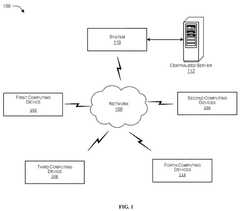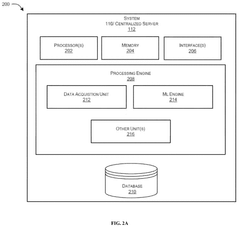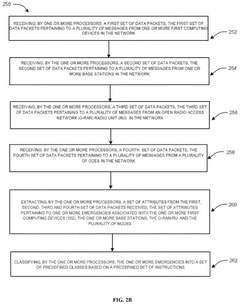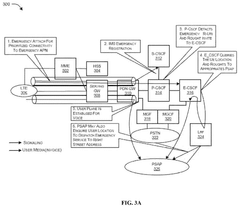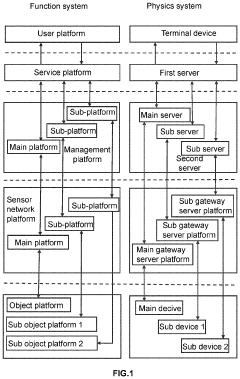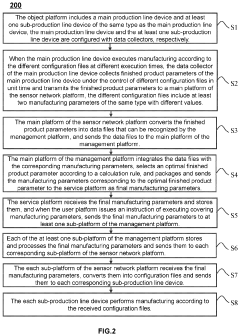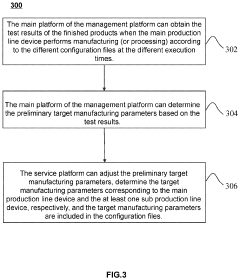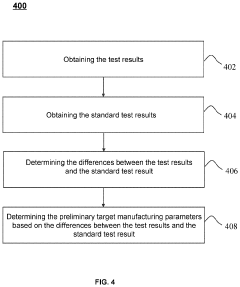Exploring Throttle Body Control in Industrial IoT (IIoT) Systems
JUL 18, 20259 MIN READ
Generate Your Research Report Instantly with AI Agent
Patsnap Eureka helps you evaluate technical feasibility & market potential.
IIoT Throttle Control Background and Objectives
Industrial Internet of Things (IIoT) has revolutionized the manufacturing and industrial sectors by integrating advanced sensors, connectivity, and data analytics into traditional industrial processes. Within this context, throttle body control has emerged as a critical component in optimizing industrial operations, particularly in areas such as energy management, fluid control, and process automation.
The evolution of throttle body control in IIoT systems can be traced back to the early 2000s when digital control systems began replacing analog counterparts. This shift marked the beginning of more precise and responsive throttle control mechanisms. As IIoT technologies matured, the integration of smart sensors and real-time data processing capabilities further enhanced the accuracy and efficiency of throttle body control systems.
The primary objective of exploring throttle body control in IIoT systems is to achieve optimal performance, energy efficiency, and reliability in industrial processes. By leveraging advanced control algorithms, machine learning techniques, and real-time data analysis, IIoT-enabled throttle control systems aim to minimize energy consumption, reduce wear and tear on equipment, and maximize overall system efficiency.
One of the key drivers behind the development of advanced throttle body control in IIoT systems is the increasing demand for sustainability and energy efficiency in industrial operations. As global environmental regulations become more stringent, industries are under pressure to reduce their carbon footprint and optimize resource utilization. Intelligent throttle control systems play a crucial role in achieving these objectives by precisely regulating fluid flow, air intake, and other critical parameters in industrial processes.
Another significant factor contributing to the advancement of throttle body control in IIoT systems is the growing need for predictive maintenance and condition monitoring. By continuously analyzing throttle performance data, IIoT systems can detect potential issues before they lead to equipment failure or process disruptions. This proactive approach to maintenance not only reduces downtime but also extends the lifespan of industrial equipment.
The convergence of throttle body control and IIoT technologies has also opened up new possibilities for remote monitoring and control of industrial processes. This capability is particularly valuable in hazardous environments or geographically dispersed operations, where on-site human intervention may be challenging or dangerous. Remote throttle control enables operators to fine-tune processes, respond to changing conditions, and optimize performance from a centralized location.
As we look towards the future, the exploration of throttle body control in IIoT systems is expected to focus on further integration with artificial intelligence and edge computing technologies. These advancements will enable more autonomous decision-making capabilities, faster response times, and even greater optimization of industrial processes. The ultimate goal is to create self-adjusting, highly efficient throttle control systems that can adapt to changing conditions and requirements with minimal human intervention.
The evolution of throttle body control in IIoT systems can be traced back to the early 2000s when digital control systems began replacing analog counterparts. This shift marked the beginning of more precise and responsive throttle control mechanisms. As IIoT technologies matured, the integration of smart sensors and real-time data processing capabilities further enhanced the accuracy and efficiency of throttle body control systems.
The primary objective of exploring throttle body control in IIoT systems is to achieve optimal performance, energy efficiency, and reliability in industrial processes. By leveraging advanced control algorithms, machine learning techniques, and real-time data analysis, IIoT-enabled throttle control systems aim to minimize energy consumption, reduce wear and tear on equipment, and maximize overall system efficiency.
One of the key drivers behind the development of advanced throttle body control in IIoT systems is the increasing demand for sustainability and energy efficiency in industrial operations. As global environmental regulations become more stringent, industries are under pressure to reduce their carbon footprint and optimize resource utilization. Intelligent throttle control systems play a crucial role in achieving these objectives by precisely regulating fluid flow, air intake, and other critical parameters in industrial processes.
Another significant factor contributing to the advancement of throttle body control in IIoT systems is the growing need for predictive maintenance and condition monitoring. By continuously analyzing throttle performance data, IIoT systems can detect potential issues before they lead to equipment failure or process disruptions. This proactive approach to maintenance not only reduces downtime but also extends the lifespan of industrial equipment.
The convergence of throttle body control and IIoT technologies has also opened up new possibilities for remote monitoring and control of industrial processes. This capability is particularly valuable in hazardous environments or geographically dispersed operations, where on-site human intervention may be challenging or dangerous. Remote throttle control enables operators to fine-tune processes, respond to changing conditions, and optimize performance from a centralized location.
As we look towards the future, the exploration of throttle body control in IIoT systems is expected to focus on further integration with artificial intelligence and edge computing technologies. These advancements will enable more autonomous decision-making capabilities, faster response times, and even greater optimization of industrial processes. The ultimate goal is to create self-adjusting, highly efficient throttle control systems that can adapt to changing conditions and requirements with minimal human intervention.
Market Demand for IIoT Throttle Control Solutions
The market demand for Industrial IoT (IIoT) throttle control solutions has been experiencing significant growth in recent years. This surge is primarily driven by the increasing adoption of automation and smart manufacturing processes across various industries. As companies strive to optimize their operations, reduce costs, and improve efficiency, the need for advanced throttle control systems integrated with IIoT capabilities has become more pronounced.
One of the key factors fueling this demand is the push for energy efficiency and sustainability in industrial processes. IIoT-enabled throttle control solutions offer precise regulation of fluid and gas flows, leading to optimized energy consumption and reduced waste. This aligns with the global trend towards greener manufacturing practices and stricter environmental regulations, making these solutions increasingly attractive to businesses across sectors.
The automotive industry has emerged as a major consumer of IIoT throttle control systems. With the rise of electric and hybrid vehicles, there is a growing need for sophisticated throttle control mechanisms that can seamlessly integrate with advanced powertrain systems. This has created a substantial market opportunity for IIoT solution providers specializing in automotive applications.
In the oil and gas sector, the demand for IIoT throttle control solutions is driven by the need for improved safety, reliability, and operational efficiency. These systems enable real-time monitoring and control of critical processes, reducing the risk of accidents and minimizing downtime. The ability to remotely manage and optimize throttle operations in hazardous environments has made these solutions particularly valuable in this industry.
The aerospace and defense sectors have also shown increasing interest in IIoT throttle control technologies. The need for precise control in aircraft engines and missile systems has led to the development of highly sophisticated throttle control solutions that leverage IIoT capabilities for enhanced performance and reliability.
Market research indicates that the global IIoT throttle control market is expected to grow at a compound annual growth rate (CAGR) of over 8% in the next five years. This growth is attributed to the increasing adoption of Industry 4.0 technologies and the ongoing digital transformation across industries.
However, the market also faces certain challenges. Concerns about cybersecurity and data privacy in IIoT systems have led some potential customers to hesitate in adopting these solutions. Additionally, the high initial investment required for implementing advanced throttle control systems can be a barrier for small and medium-sized enterprises.
Despite these challenges, the overall market outlook remains positive. The continuous advancements in sensor technologies, edge computing, and artificial intelligence are expected to further enhance the capabilities of IIoT throttle control solutions, opening up new application areas and driving market growth in the coming years.
One of the key factors fueling this demand is the push for energy efficiency and sustainability in industrial processes. IIoT-enabled throttle control solutions offer precise regulation of fluid and gas flows, leading to optimized energy consumption and reduced waste. This aligns with the global trend towards greener manufacturing practices and stricter environmental regulations, making these solutions increasingly attractive to businesses across sectors.
The automotive industry has emerged as a major consumer of IIoT throttle control systems. With the rise of electric and hybrid vehicles, there is a growing need for sophisticated throttle control mechanisms that can seamlessly integrate with advanced powertrain systems. This has created a substantial market opportunity for IIoT solution providers specializing in automotive applications.
In the oil and gas sector, the demand for IIoT throttle control solutions is driven by the need for improved safety, reliability, and operational efficiency. These systems enable real-time monitoring and control of critical processes, reducing the risk of accidents and minimizing downtime. The ability to remotely manage and optimize throttle operations in hazardous environments has made these solutions particularly valuable in this industry.
The aerospace and defense sectors have also shown increasing interest in IIoT throttle control technologies. The need for precise control in aircraft engines and missile systems has led to the development of highly sophisticated throttle control solutions that leverage IIoT capabilities for enhanced performance and reliability.
Market research indicates that the global IIoT throttle control market is expected to grow at a compound annual growth rate (CAGR) of over 8% in the next five years. This growth is attributed to the increasing adoption of Industry 4.0 technologies and the ongoing digital transformation across industries.
However, the market also faces certain challenges. Concerns about cybersecurity and data privacy in IIoT systems have led some potential customers to hesitate in adopting these solutions. Additionally, the high initial investment required for implementing advanced throttle control systems can be a barrier for small and medium-sized enterprises.
Despite these challenges, the overall market outlook remains positive. The continuous advancements in sensor technologies, edge computing, and artificial intelligence are expected to further enhance the capabilities of IIoT throttle control solutions, opening up new application areas and driving market growth in the coming years.
Current Challenges in IIoT Throttle Body Control
The implementation of throttle body control in Industrial IoT (IIoT) systems faces several significant challenges that hinder its widespread adoption and optimal performance. One of the primary obstacles is the complexity of integrating diverse industrial equipment and legacy systems with modern IoT technologies. Many industrial environments still rely on older machinery that lacks built-in connectivity features, making it difficult to retrofit these systems with IoT-enabled throttle body control mechanisms.
Data security and privacy concerns pose another major challenge in IIoT throttle body control. As industrial systems become more connected, they become increasingly vulnerable to cyber attacks. Ensuring the integrity and confidentiality of data transmitted between throttle body sensors, control units, and central management systems is crucial but often complicated by the need to maintain real-time responsiveness.
The reliability and robustness of IIoT throttle body control systems in harsh industrial environments present additional challenges. Industrial settings often involve extreme temperatures, vibrations, electromagnetic interference, and other adverse conditions that can affect the performance and longevity of IoT devices and sensors. Developing hardware and software solutions that can withstand these conditions while maintaining accurate throttle body control is a significant engineering challenge.
Scalability and interoperability issues also plague IIoT throttle body control implementations. As industrial operations grow and evolve, the throttle body control system must be able to accommodate an increasing number of devices and data points without compromising performance or reliability. Furthermore, ensuring seamless communication and compatibility between different vendors' IoT devices, protocols, and platforms remains a persistent challenge in the industrial sector.
The need for real-time data processing and low-latency control presents another hurdle in IIoT throttle body systems. Many industrial processes require instantaneous adjustments to throttle body positions based on rapidly changing conditions. Achieving this level of responsiveness while managing large volumes of sensor data and complex control algorithms can strain existing network infrastructures and computing resources.
Lastly, the shortage of skilled personnel with expertise in both industrial processes and IoT technologies poses a significant challenge to the widespread adoption and maintenance of IIoT throttle body control systems. The interdisciplinary nature of these systems requires professionals who can bridge the gap between traditional industrial engineering and cutting-edge IoT technologies, a skill set that is currently in high demand but short supply.
Data security and privacy concerns pose another major challenge in IIoT throttle body control. As industrial systems become more connected, they become increasingly vulnerable to cyber attacks. Ensuring the integrity and confidentiality of data transmitted between throttle body sensors, control units, and central management systems is crucial but often complicated by the need to maintain real-time responsiveness.
The reliability and robustness of IIoT throttle body control systems in harsh industrial environments present additional challenges. Industrial settings often involve extreme temperatures, vibrations, electromagnetic interference, and other adverse conditions that can affect the performance and longevity of IoT devices and sensors. Developing hardware and software solutions that can withstand these conditions while maintaining accurate throttle body control is a significant engineering challenge.
Scalability and interoperability issues also plague IIoT throttle body control implementations. As industrial operations grow and evolve, the throttle body control system must be able to accommodate an increasing number of devices and data points without compromising performance or reliability. Furthermore, ensuring seamless communication and compatibility between different vendors' IoT devices, protocols, and platforms remains a persistent challenge in the industrial sector.
The need for real-time data processing and low-latency control presents another hurdle in IIoT throttle body systems. Many industrial processes require instantaneous adjustments to throttle body positions based on rapidly changing conditions. Achieving this level of responsiveness while managing large volumes of sensor data and complex control algorithms can strain existing network infrastructures and computing resources.
Lastly, the shortage of skilled personnel with expertise in both industrial processes and IoT technologies poses a significant challenge to the widespread adoption and maintenance of IIoT throttle body control systems. The interdisciplinary nature of these systems requires professionals who can bridge the gap between traditional industrial engineering and cutting-edge IoT technologies, a skill set that is currently in high demand but short supply.
Existing IIoT Throttle Body Control Solutions
01 Electronic throttle control systems
Electronic throttle control systems use sensors and actuators to regulate airflow into the engine, replacing traditional mechanical linkages. These systems offer more precise control over engine performance, improved fuel efficiency, and better integration with other vehicle systems.- Electronic throttle control systems: Electronic throttle control systems are used to regulate the airflow into the engine by controlling the throttle body position. These systems typically involve sensors, actuators, and control units to precisely adjust the throttle opening based on various input signals, improving engine performance and fuel efficiency.
- Throttle body position sensors: Throttle body position sensors are crucial components in throttle control systems. These sensors provide feedback on the current throttle position to the engine control unit, allowing for accurate adjustments and monitoring of the throttle body's operation.
- Throttle body cleaning and maintenance: Regular cleaning and maintenance of the throttle body are essential for optimal performance. This includes removing carbon deposits and other contaminants that can accumulate over time, affecting the throttle's operation and engine efficiency.
- Throttle body design improvements: Advancements in throttle body design focus on enhancing airflow characteristics, reducing friction, and improving overall efficiency. These improvements may include changes in materials, shape, and internal components to optimize throttle body performance.
- Integration with engine management systems: Throttle body control is increasingly integrated with broader engine management systems. This integration allows for more sophisticated control strategies, taking into account factors such as engine load, temperature, and emissions requirements to optimize overall engine performance and efficiency.
02 Throttle body design and components
Innovations in throttle body design focus on improving airflow characteristics, reducing weight, and enhancing durability. Key components include the throttle plate, housing, and various sensors. Advanced materials and manufacturing techniques are employed to optimize performance and reliability.Expand Specific Solutions03 Throttle position sensors and feedback mechanisms
Accurate throttle position sensing is crucial for proper engine management. Advanced sensors provide real-time feedback on throttle plate position, allowing for precise control and diagnostics. These sensors often incorporate redundancy features for improved reliability and safety.Expand Specific Solutions04 Integration with engine management systems
Modern throttle control systems are tightly integrated with broader engine management and vehicle control systems. This integration allows for advanced features such as cruise control, traction control, and adaptive driving modes, optimizing overall vehicle performance and efficiency.Expand Specific Solutions05 Fail-safe and diagnostic features
To ensure safety and reliability, throttle control systems incorporate various fail-safe mechanisms and diagnostic capabilities. These features can detect malfunctions, implement limp-home modes, and provide detailed diagnostic information for maintenance and troubleshooting purposes.Expand Specific Solutions
Key Players in IIoT Throttle Control Industry
The Industrial IoT (IIoT) throttle body control market is in a growth phase, with increasing adoption across various industries. The market size is expanding rapidly due to the rising demand for smart manufacturing and process automation. Technologically, throttle body control in IIoT systems is advancing, with companies like Huawei, Intel, and MediaTek leading innovation. These firms are developing sophisticated IoT chips and communication modules to enhance throttle control precision and efficiency. Established industrial players such as Mitsubishi Electric and Dell'Orto are integrating IIoT capabilities into their existing throttle body systems, while newer entrants like Chengdu Qinchuan IoT Technology are focusing on specialized IIoT solutions for throttle control applications.
Huawei Technologies Co., Ltd.
Technical Solution: Huawei's approach to throttle body control in IIoT systems leverages their advanced 5G and edge computing technologies. They have developed a smart throttle control system that utilizes real-time data processing and AI algorithms to optimize fuel efficiency and engine performance. The system incorporates high-precision sensors and actuators connected via a low-latency 5G network, enabling millisecond-level responsiveness[1]. Huawei's solution also integrates with their IoT platform, allowing for seamless data collection, analysis, and remote management across large-scale industrial deployments[3].
Strengths: Robust 5G infrastructure, advanced AI capabilities, and comprehensive IoT ecosystem integration. Weaknesses: Potential concerns over data security and reliance on Huawei's proprietary technologies.
Mitsubishi Electric Corp.
Technical Solution: Mitsubishi Electric's approach to throttle body control in IIoT systems focuses on their e-F@ctory concept, which integrates FA (Factory Automation) and IT technologies. Their solution incorporates advanced PLC (Programmable Logic Controller) systems with high-speed data processing capabilities, enabling precise throttle control in industrial environments. Mitsubishi's throttle control system utilizes their MELSEC iQ-R series PLCs, which offer processing speeds up to 0.98 ns per instruction[2]. The system also integrates with their MELSOFT engineering software suite, allowing for easy configuration and real-time monitoring of throttle performance[4].
Strengths: Extensive experience in industrial automation, highly reliable hardware, and seamless integration with existing factory systems. Weaknesses: May require significant investment in Mitsubishi's ecosystem for full functionality.
Core Innovations in IIoT Throttle Control Systems
System and method for detecting and handling machine emergencies in a network
PatentPendingUS20240356812A1
Innovation
- A system and method utilizing a machine learning engine to identify and classify machine emergencies within a 3GPP network, enrich emergency messages with data like location and machine ID, and redirect them to appropriate servers, enabling SIM-less emergency attach and handling of various emergency types through predefined classes and quality of service profiles.
Industrial internet of things system for automatic control of production line manufacturing parameters and control methods thereof
PatentActiveUS11874650B2
Innovation
- An Industrial Internet of Things (IIoT) system with a five-platform structure, including a user platform, service platform, management platform, sensor network platform, and object platform, allows for continuous optimization and updating of manufacturing parameters across sub-production line devices through a main production line device, using data collectors and centralized management to determine and apply optimal parameters.
Cybersecurity Considerations for IIoT Throttle Control
Cybersecurity is a critical aspect of Industrial IoT (IIoT) throttle control systems, as these systems are increasingly connected to networks and vulnerable to potential cyber threats. The integration of throttle body control into IIoT environments introduces new attack vectors that malicious actors could exploit, potentially leading to severe consequences in industrial processes.
One of the primary security concerns in IIoT throttle control is unauthorized access. Attackers may attempt to gain control over the throttle system, manipulating its operation and potentially causing equipment damage or production disruptions. To mitigate this risk, robust authentication and access control mechanisms must be implemented, including multi-factor authentication and role-based access control.
Data integrity is another crucial consideration. The throttle control system relies on accurate sensor data and control signals to function correctly. Any tampering with this data could lead to incorrect throttle adjustments, affecting system performance and safety. Implementing data encryption and digital signatures can help ensure the integrity and authenticity of transmitted information.
Network segmentation plays a vital role in protecting IIoT throttle control systems. By isolating these systems from other network segments, the potential impact of a security breach can be limited. Firewalls and intrusion detection systems should be deployed to monitor and control traffic between different network segments.
Regular security assessments and penetration testing are essential to identify vulnerabilities in the IIoT throttle control system. These assessments should cover both the hardware and software components, including firmware, communication protocols, and any cloud-based services used in the system.
Secure software development practices are crucial in building resilient IIoT throttle control systems. This includes regular code reviews, static and dynamic analysis, and adherence to secure coding standards. Additionally, a robust patch management process should be in place to address any discovered vulnerabilities promptly.
The human factor cannot be overlooked in IIoT throttle control security. Employee training and awareness programs should be implemented to educate staff about potential cyber threats and best practices for maintaining system security. This includes proper handling of credentials, recognizing phishing attempts, and following established security protocols.
As IIoT throttle control systems continue to evolve, emerging technologies such as artificial intelligence and machine learning may play a role in enhancing cybersecurity. These technologies can be used to detect anomalies in system behavior, predict potential security threats, and automate response mechanisms to mitigate risks in real-time.
One of the primary security concerns in IIoT throttle control is unauthorized access. Attackers may attempt to gain control over the throttle system, manipulating its operation and potentially causing equipment damage or production disruptions. To mitigate this risk, robust authentication and access control mechanisms must be implemented, including multi-factor authentication and role-based access control.
Data integrity is another crucial consideration. The throttle control system relies on accurate sensor data and control signals to function correctly. Any tampering with this data could lead to incorrect throttle adjustments, affecting system performance and safety. Implementing data encryption and digital signatures can help ensure the integrity and authenticity of transmitted information.
Network segmentation plays a vital role in protecting IIoT throttle control systems. By isolating these systems from other network segments, the potential impact of a security breach can be limited. Firewalls and intrusion detection systems should be deployed to monitor and control traffic between different network segments.
Regular security assessments and penetration testing are essential to identify vulnerabilities in the IIoT throttle control system. These assessments should cover both the hardware and software components, including firmware, communication protocols, and any cloud-based services used in the system.
Secure software development practices are crucial in building resilient IIoT throttle control systems. This includes regular code reviews, static and dynamic analysis, and adherence to secure coding standards. Additionally, a robust patch management process should be in place to address any discovered vulnerabilities promptly.
The human factor cannot be overlooked in IIoT throttle control security. Employee training and awareness programs should be implemented to educate staff about potential cyber threats and best practices for maintaining system security. This includes proper handling of credentials, recognizing phishing attempts, and following established security protocols.
As IIoT throttle control systems continue to evolve, emerging technologies such as artificial intelligence and machine learning may play a role in enhancing cybersecurity. These technologies can be used to detect anomalies in system behavior, predict potential security threats, and automate response mechanisms to mitigate risks in real-time.
Energy Efficiency Impact of IIoT Throttle Control
The implementation of Industrial Internet of Things (IIoT) throttle control systems has a significant impact on energy efficiency across various industrial sectors. By optimizing the control of throttle bodies in industrial processes, IIoT solutions can substantially reduce energy consumption and improve overall operational efficiency.
One of the primary ways IIoT throttle control enhances energy efficiency is through precise regulation of fluid and gas flows in industrial systems. Traditional throttle control methods often rely on manual adjustments or fixed setpoints, leading to inefficiencies and energy waste. In contrast, IIoT-enabled throttle control systems utilize real-time data and advanced algorithms to dynamically adjust throttle positions based on current process conditions and demand.
This dynamic control allows for more accurate matching of energy input to actual process requirements. For instance, in HVAC systems, IIoT throttle control can modulate airflow based on occupancy, temperature, and humidity levels, reducing unnecessary energy expenditure during periods of low demand. Similarly, in industrial boilers and furnaces, precise throttle control can optimize fuel consumption by maintaining ideal air-to-fuel ratios under varying load conditions.
The integration of IIoT throttle control also enables predictive maintenance strategies, which indirectly contribute to energy efficiency. By continuously monitoring throttle performance and wear patterns, maintenance can be scheduled proactively, ensuring optimal operation and preventing energy losses due to degraded equipment performance.
Furthermore, IIoT throttle control systems facilitate energy consumption tracking and analysis on a granular level. This data-driven approach allows industries to identify energy-intensive processes, benchmark performance, and implement targeted efficiency improvements. The ability to aggregate and analyze throttle control data across multiple sites or production lines provides valuable insights for enterprise-wide energy management strategies.
In the context of industrial motors and pumps, IIoT throttle control can significantly reduce energy waste associated with oversized equipment. By precisely controlling flow rates and pressures, these systems can operate closer to their optimal efficiency points, avoiding the energy penalties typically associated with throttling oversized pumps or motors.
The energy efficiency gains from IIoT throttle control extend beyond individual process units to entire production systems. By coordinating throttle control across interconnected processes, IIoT solutions can optimize energy flow throughout the production chain, minimizing waste and maximizing overall system efficiency.
As industries increasingly focus on sustainability and carbon footprint reduction, the energy efficiency improvements offered by IIoT throttle control become even more critical. These systems not only contribute to cost savings but also support broader environmental goals by reducing greenhouse gas emissions associated with industrial energy consumption.
One of the primary ways IIoT throttle control enhances energy efficiency is through precise regulation of fluid and gas flows in industrial systems. Traditional throttle control methods often rely on manual adjustments or fixed setpoints, leading to inefficiencies and energy waste. In contrast, IIoT-enabled throttle control systems utilize real-time data and advanced algorithms to dynamically adjust throttle positions based on current process conditions and demand.
This dynamic control allows for more accurate matching of energy input to actual process requirements. For instance, in HVAC systems, IIoT throttle control can modulate airflow based on occupancy, temperature, and humidity levels, reducing unnecessary energy expenditure during periods of low demand. Similarly, in industrial boilers and furnaces, precise throttle control can optimize fuel consumption by maintaining ideal air-to-fuel ratios under varying load conditions.
The integration of IIoT throttle control also enables predictive maintenance strategies, which indirectly contribute to energy efficiency. By continuously monitoring throttle performance and wear patterns, maintenance can be scheduled proactively, ensuring optimal operation and preventing energy losses due to degraded equipment performance.
Furthermore, IIoT throttle control systems facilitate energy consumption tracking and analysis on a granular level. This data-driven approach allows industries to identify energy-intensive processes, benchmark performance, and implement targeted efficiency improvements. The ability to aggregate and analyze throttle control data across multiple sites or production lines provides valuable insights for enterprise-wide energy management strategies.
In the context of industrial motors and pumps, IIoT throttle control can significantly reduce energy waste associated with oversized equipment. By precisely controlling flow rates and pressures, these systems can operate closer to their optimal efficiency points, avoiding the energy penalties typically associated with throttling oversized pumps or motors.
The energy efficiency gains from IIoT throttle control extend beyond individual process units to entire production systems. By coordinating throttle control across interconnected processes, IIoT solutions can optimize energy flow throughout the production chain, minimizing waste and maximizing overall system efficiency.
As industries increasingly focus on sustainability and carbon footprint reduction, the energy efficiency improvements offered by IIoT throttle control become even more critical. These systems not only contribute to cost savings but also support broader environmental goals by reducing greenhouse gas emissions associated with industrial energy consumption.
Unlock deeper insights with Patsnap Eureka Quick Research — get a full tech report to explore trends and direct your research. Try now!
Generate Your Research Report Instantly with AI Agent
Supercharge your innovation with Patsnap Eureka AI Agent Platform!
